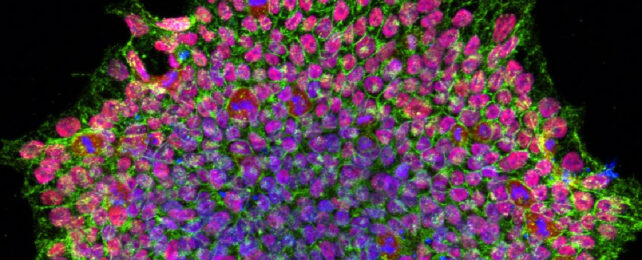Scientists already have their ways of coaxing human cells into new forms, using a special concoction of chemicals to nudge humble skin cells into malleable tissues known as induced pluripotent stem cells.
In spite of this new lease on life, these particular cells still retain a few genetic reminders of their time as a fully developed tissue, affecting their use as a blank slate.
Now an international team of researchers has gone one better: finding a new way of wiping a cell's memory clean so it can be better reprogrammed as a stem cell.
This might all sound like some molecular wizardry, but induced pluripotent stem cells ( iPSCs) as they're known have been used in medical research to model diseases and develop therapies since 2006.
Their discovery, by a pair of Japanese scientists, opened up a new realm of regenerative medicine, whereby embryonic-like stem cells could be engineered from ordinary human adult cells using a set of reprogramming factors.
The promise of iPSCs is immense: because they can propagate indefinitely and give rise to every other cell type in the body, iPSCs are not only incredibly useful tools for studying diseases. They are also shaping up as a stepping stone to individualized cell-based therapies, which could replace damaged or diseased tissues.
In the lab, scientists have used iPSCs to grow heart tissue that beats like real cardiac cells and engineer mini replicas of organs, called organoids.
iPSCs have also given us an unparalleled view into the fundamentals of cell division, and neurodegenerative diseases such as Alzheimer's and motor neurone disease.
But the process of fashioning iPSCs isn't perfect: some cells retain the epigenetic edits applied to their DNA in their differentiated state, or even undergo spontaneous changes to these epigenetic 'memories' that can affect the cell's behavior.
"This can create functional differences between the iPS cells and the embryonic stem cells they're supposed to imitate, and specialized cells subsequently derived from them, which limits their use," explains study author Ryan Lister, a genome biologist at the University of Western Australia.
So Lister and his colleagues sought to understand when those abnormalities emerge during cell reprogramming and figure out how they and other lingering markings could be avoided or erased.
The team profiled gene expression as cells moved through the reprogramming process, to know which genes were switched on, and when.
Much of a cell's DNA is coiled around bulky proteins called histones, shielding those sections from cellular machinery whose job it is to decode genes into proteins.
Depending on where histones are positioned, a cell might not respond to the chemical cues scientists ply them with, in which case they carry an epigenetic memory through the reprogramming process.
The new method, called transient-naive-treatment (TNT) reprogramming, mimics the reset of a cell's epigenome that happens in very early embryonic development, before and after an embryo implants itself in the uterus wall.
In a series of cell experiments, the researchers showed that TNT reprogramming "effectively erases epigenetic memory", particularly in densely packed regions of DNA – but without deleting other important information imprinted on the genome.
As a result, the reprogrammed cells better resembled embryonic-like stem cells in their function and on a molecular level.
"We predict that TNT reprogramming will establish a new benchmark for cell therapies and biomedical research, and substantially advance their progress," says Lister.
"It solves problems associated with conventionally generated iPS cells that if not addressed could have severely detrimental consequences for cell therapies in the long run," adds Jia Tan, study author and cell biologist at Monash University in Melbourne.
The study has been published in Nature.
